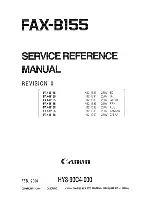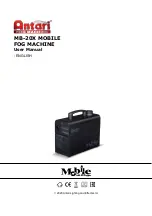
5
28
1
2
3
4
1
Ñáîðêè
Óñòàíîâêà ìàøèíû
1 Âûáîð ñòðî÷êè: D
2 Äëèíà ñòåæêà: S.S
3 Íàòÿæåíèå âåðõíåé íèòè: 1 - 4
4 Ïðèæèìíàÿ ëàïêà: ëàïêà äëÿ çèã-çàãà À
ÏÐÈÌÅ×ÀÍÈÅ:
Îñëàáüòå íàòÿæåíèå âåðõíåé íèòè äëÿ
îáëåã÷åíèÿ ñîçäàíèÿ ñáîðîê.
1.
Ñáîðêè – óòîí÷åííàÿ äåêîðàòèâíàÿ îòäåëêà
íà äåòñêîé îäåæäå èëè æåíñêèõ áëóçêàõ.
Âûáåðèòå ìÿãêóþ è ëåãêóþ òêàíü òàêóþ êàê
áàòèñò èëè øàëè. Îòðåæüòå òêàíü â òðè ðàçà
äëèííåå äëèíû ïðåäïîëàãàåìîãî ïðîåêòà.
Óñòàíîâèòå äëèíó ñòåæêà íà «4» è ïðîøåéòå
ðÿäû ïðÿìûõ ñòåæêîâ, ïðèáëèçèòåëüíî íà 1 ñì
äðóã îò äðóãà äëÿ ñîçäàíèÿ ñáîðîê.
1 Ðàññòîÿíèå ìåæäó ðÿäàìè
2.
Çàâÿæèòå íèòè ñ îäíîé ñòîðîíû . Ñ äðóãîé
ñòîðîíû ïîòÿíèòå çà øïóëüíóþ (íèæíþþ) íèòü è
ðîâíî ðàñïðåäåëèòå ñêëàäêè .
Ïðîøåéòå äåêîðàòèâíûå ñòðî÷êè ìåæäó ðÿäàìè
ïðÿìûõ ñòåæêîâ. Âûòÿíèòå íèòè ïðÿìûõ
ñòåæêîâ.
5
1
3
Êíîïêà ðåâåðñà
Ïîêà âû íàæèìàåòå íà êíîïêó ðåâåðñà,
áóäåò øèòü â îáðàòíîì íàïðàâëåíèè.
ìàøèíà
Êîíòðîëü ñêîðîñòè øèòüÿ
Íîæíàÿ ïåäàëü
Ñêîðîñòü øèòüÿ ìîæíî èçìåíÿòü ïðè ïîìîùè
ïåäàëè. ×åì ñèëüíåå äàâèòü íà ïåäàëü, òåì
âûøå ñêîðîñòü øèòüÿ.
Òðàíñïîðòåð ïîäà÷è òêàíè
Ïðè ïðèøèâàíèè ïóãîâèö è ò.ä. îòêëþ÷èòå
òðàíñïîðòåð.
Îòêëþ÷åíèå òðàíñïîðòåðà ïîäà÷è òêàíè
Äëÿ îòêëþ÷åíèÿ òðàíñïîðòåðà òêàíè
ïåðåäâèíüòå ðû÷àã îòêëþ÷åíèÿ òðàíñïîðòåðà
âëåâî.
Ïîäêëþ÷åíèå òðàíñïîðòåðà ïîäà÷è òêàíè
×òîáû ïîäíÿòü òðàíñïîðòåð òêàíè, ïåðåäâèíüòå
ðû÷àã âïðàâî.
1 Ðû÷àã îòêëþ÷åíèÿ òðàíñïîðòåðà òêàíè
2 Îòêëþ÷åí
3 Ïîäêëþ÷åí
ÏÐÈÌÅ×ÀÍÈß:
Äëÿ îáû÷íîãî øèòüÿ òðàíñïîðòåð òêàíè äîëæåí
áûòü âêëþ÷åí. Ïîâåðíèòå ìàõîâîå êîëåñî è
ïðîâåðüòå, ïîäíèìåòñÿ ëè òðàíñïîðòåð òêàíè
ïðè ïåðåêëþ÷åíèè ðû÷àãà âïðàâî.
2
28
1
2
3
4
1
Ñáîðêè
Óñòàíîâêà ìàøèíû
1 Âûáîð ñòðî÷êè: D
2 Äëèíà ñòåæêà: S.S
3 Íàòÿæåíèå âåðõíåé íèòè: 1 - 4
4 Ïðèæèìíàÿ ëàïêà: ëàïêà äëÿ çèã-çàãà À
ÏÐÈÌÅ×ÀÍÈÅ:
Îñëàáüòå íàòÿæåíèå âåðõíåé íèòè äëÿ
îáëåã÷åíèÿ ñîçäàíèÿ ñáîðîê.
1.
Ñáîðêè – óòîí÷åííàÿ äåêîðàòèâíàÿ îòäåëêà
íà äåòñêîé îäåæäå èëè æåíñêèõ áëóçêàõ.
Âûáåðèòå ìÿãêóþ è ëåãêóþ òêàíü òàêóþ êàê
áàòèñò èëè øàëè. Îòðåæüòå òêàíü â òðè ðàçà
äëèííåå äëèíû ïðåäïîëàãàåìîãî ïðîåêòà.
Óñòàíîâèòå äëèíó ñòåæêà íà «4» è ïðîøåéòå
ðÿäû ïðÿìûõ ñòåæêîâ, ïðèáëèçèòåëüíî íà 1 ñì
äðóã îò äðóãà äëÿ ñîçäàíèÿ ñáîðîê.
1 Ðàññòîÿíèå ìåæäó ðÿäàìè
2.
Çàâÿæèòå íèòè ñ îäíîé ñòîðîíû . Ñ äðóãîé
ñòîðîíû ïîòÿíèòå çà øïóëüíóþ (íèæíþþ) íèòü è
ðîâíî ðàñïðåäåëèòå ñêëàäêè .
Ïðîøåéòå äåêîðàòèâíûå ñòðî÷êè ìåæäó ðÿäàìè
ïðÿìûõ ñòåæêîâ. Âûòÿíèòå íèòè ïðÿìûõ
ñòåæêîâ.
5
1
3
Êíîïêà ðåâåðñà
Ïîêà âû íàæèìàåòå íà êíîïêó ðåâåðñà,
áóäåò øèòü â îáðàòíîì íàïðàâëåíèè.
ìàøèíà
Êîíòðîëü ñêîðîñòè øèòüÿ
Íîæíàÿ ïåäàëü
Ñêîðîñòü øèòüÿ ìîæíî èçìåíÿòü ïðè ïîìîùè
ïåäàëè. ×åì ñèëüíåå äàâèòü íà ïåäàëü, òåì
âûøå ñêîðîñòü øèòüÿ.
Òðàíñïîðòåð ïîäà÷è òêàíè
Ïðè ïðèøèâàíèè ïóãîâèö è ò.ä. îòêëþ÷èòå
òðàíñïîðòåð.
Îòêëþ÷åíèå òðàíñïîðòåðà ïîäà÷è òêàíè
Äëÿ îòêëþ÷åíèÿ òðàíñïîðòåðà òêàíè
ïåðåäâèíüòå ðû÷àã îòêëþ÷åíèÿ òðàíñïîðòåðà
âëåâî.
Ïîäêëþ÷åíèå òðàíñïîðòåðà ïîäà÷è òêàíè
×òîáû ïîäíÿòü òðàíñïîðòåð òêàíè, ïåðåäâèíüòå
ðû÷àã âïðàâî.
1 Ðû÷àã îòêëþ÷åíèÿ òðàíñïîðòåðà òêàíè
2 Îòêëþ÷åí
3 Ïîäêëþ÷åí
ÏÐÈÌÅ×ÀÍÈß:
Äëÿ îáû÷íîãî øèòüÿ òðàíñïîðòåð òêàíè äîëæåí
áûòü âêëþ÷åí. Ïîâåðíèòå ìàõîâîå êîëåñî è
ïðîâåðüòå, ïîäíèìåòñÿ ëè òðàíñïîðòåð òêàíè
ïðè ïåðåêëþ÷åíèè ðû÷àãà âïðàâî.
2
1
3
2
Controlling the Sewing Speed
Foot control
Sewing speed can be varied by the foot control.
The harder you depress the foot control, the faster the
machine runs.
Reverse Stitch Lever
Push the reverse stitch lever down to sew in reverse.
The machine will sew in reverse while the lever is pushed.
Dropping the Feed Dog
The drop feed lever is located underneath the free-arm
bed on the front side of the machine.
To drop the feed dog, push the lever in the direction of the
arrow, as illustrated.
To raise the feed dog, push the lever in the direction of
the arrow, as illustrated, and turn the handwheel toward
you.
The feed dog must be up for regular sewing.
q
Drop feed lever
w
Lowered position
e
Raised position
w
e
q








































